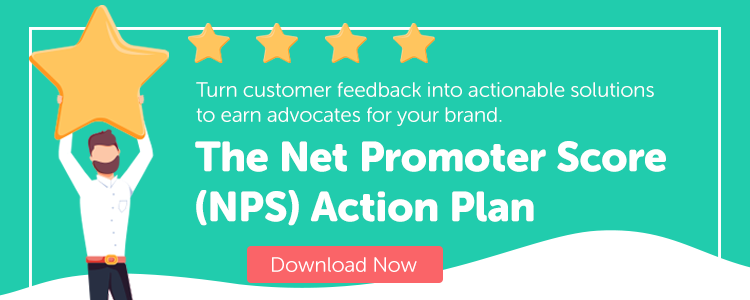Every business wants to attract new customers, but holding onto the customers you already have is usually just as important.
On average, converting a new customer is much more expensive than securing a repeat sale. Customers who have had positive experiences with your brand already know what you offer, what your products are like, and what they can expect from a purchase.
Knowing how to retain your customers can help your business secure repeat sales and drive growth.
5 Customer Retention Components You Need to Know
1. Understanding Your Customers
To retain customers, you need to know them as well as possible. Understanding how your customers act and why — their motivations, preferences, needs and concerns — will make it much easier for you to secure their business and provide the services that they need. If your business can respond to their needs, these customers may quickly become loyal to your brand.
For example, many companies are using marketing personalization right now to adapt their marketing communications to the preferences of individual customers.
They use customer data and special marketing tools to ensure that marketing communications are as relevant and valuable to each customer as possible, rather than using one-size-fits-all messaging to speak to their entire audience at once.
Adding a personal touch to your communications and sales practices will help your business engage with customers’ needs and concerns.
For this strategy to work, however, you will need a lot of information on your customers. Information sources like CRM tools, web analytics, and app data can help you better understand what your customers need.
2. The Omnichannel Approach
Customers use more channels than ever when researching and buying. In addition to self-service ecommerce platforms (like an online storefront), customers may also want to use online chats, video chats, email, in-person retail, and phone calls when making a purchase.
Successful businesses will need to offer many sales channels, based on customer needs, and also ensure that each customer has a consistent experience across channels. These businesses will also need to consider different strategies for virtual selling compared to in-person selling.
For example, one customer may begin their buyer’s journey by browsing products at a brick-and-mortar retail location, before ultimately making a purchase online. Consistency in branding and marketing between your offline and online sales channels will help smooth out their buyer’s journey and build brand awareness at the same time.
Tools like customer relationship management (CRM) systems can help you keep a customer’s cross-channel experience as smooth as possible. These tools keep track of all information on a single customer that a company has access to.
A business can use this centralized source of information to keep a customer’s experience consistent across channels. For example, customer service representatives can use information from a customer’s online shopping history in the event that they call with a question about your offerings.
3. Gathering Feedback
Learning what customers need can be a challenge. While businesses have access to more information than ever on customer behavior, using that information well may be difficult.
Instead, it may be easier to go to customers directly. Gathering feedback and listening to complaints will help your business learn what its customers honestly think.
Creating a system that allows customers to leave honest feedback will help you learn more about their needs and concerns.
For example, many businesses use surveys after customer service calls to gather information on how customers feel about their brand. Some companies may offer incentives (like discounts, reward points and similar deals) for customers that complete these surveys, increasing the number of customers who respond.
The results of these surveys can help the company identify problems that may be reducing customer retention and allow them to make improvements.
Other companies may use social listening tools to follow conversations about their brand on social media. Your business may also be able to use live chat data and recorded customer service calls to learn more about the concerns and needs of your customers.
4. Identifying Which Customers You’re Losing
Not every customer is going to have the same needs and concerns. Different customer segments may have wildly different expectations and desires, and appealing to one segment may help retain customers in another segment.
Tracking your customers and determining your business’s retention rate will help you determine how many customers you’re losing and which customers aren’t sticking with you.
For example, you may notice that you tend to lose customers that buy certain products, answer survey questions the same way, or use similar sales channels. These patterns can help you make changes to your business that retain these groups of customers.
5. Focus on Customer Experience
Often, it’s not just the products or services that you offer that will bring customers back. A customer’s experiences while shopping determines how they remember your brand. The experiences that they have while interacting with your brand, both positive and negative, will determine if they become a repeat customer.
Revamping your site, web presence, storefront, and sales channels to improve customer experience can help you retain customers. Knowing your customers is an essential first step in improving customer experience — meaning that if you already understand your customer base, you’re in a good position to make business changes that generate positive experiences.
How Any Business Can Maximize Customer Retention
Retaining current customers can help you lay the foundation for strong business growth. Because customer retention is typically cheaper than attracting new customers, it’s also a cost-effective way to drive revenue.
Customer research, an omni-channel approach, customer segmentation, and focus on customer experience can help any business retain more customers. Understanding your customers is particularly important, and using information sources like surveys and customer service calls will help you better understand your customers’ needs and concerns.


Eleanor Hecks
Eleanor Hecks is editor-in-chief at Designerly Magazine. She was the creative director at a prominent digital marketing agency prior to becoming a full-time freelance designer. Eleanor lives in Philadelphia with her husband and pup, Bear.